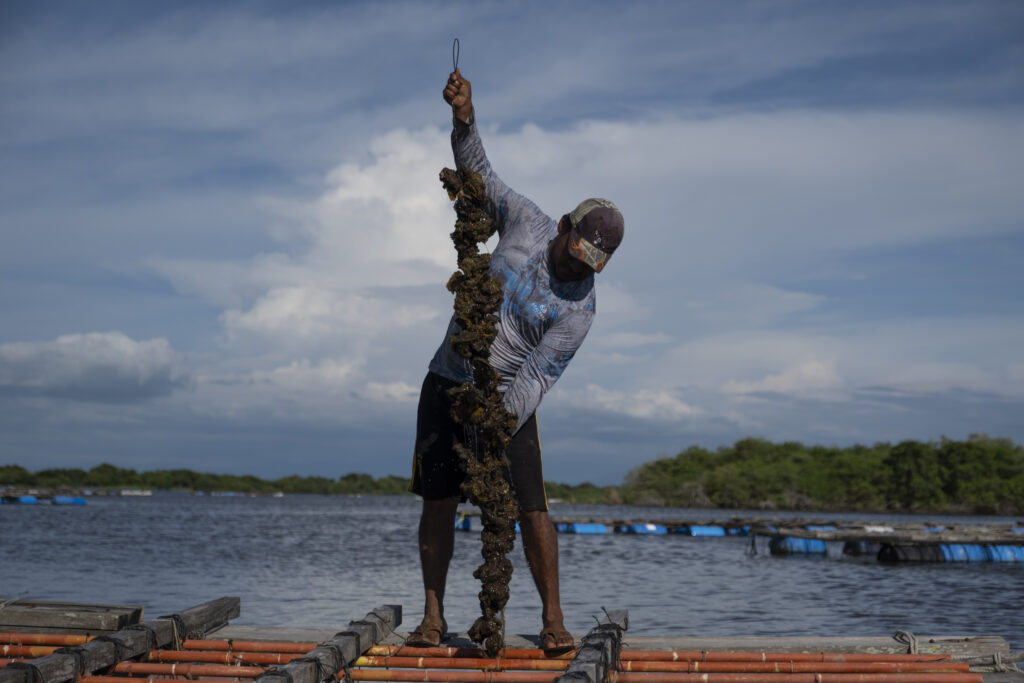The Global Mangrove Alliance is fighting to save vital ecosystems
Mangrove ecosystems provide community livelihoods, function as biodiversity hotspots, and help mitigate the effects of climate change, but efforts to protect them have been patchy and localized. A few organizations have banded together to change that.
MARISMAS NACIONALES
Oscar González Díaz takes a closer look at the mangroves surrounding a small patch of earth and vegetation, one of few remaining in this part of the lagoon. The leaves are sparse, but they will regenerate once the rains pick up and increase the ratio of freshwater to saltwater in the Chumbeño lagoon, connected to the ocean on Mexico’s Pacific coast.
A fisherman from Francisco Villa, one of the villages along the lagoon, González Díaz is also a community monitor in this area of the Marismas Nacionales Nayarit biosphere reserve. The protected area is home to 15-20 percent of Mexico’s mangroves, and local monitors have been working in tandem with governmental authorities and with support from conservation groups to monitor, protect, and restore them.
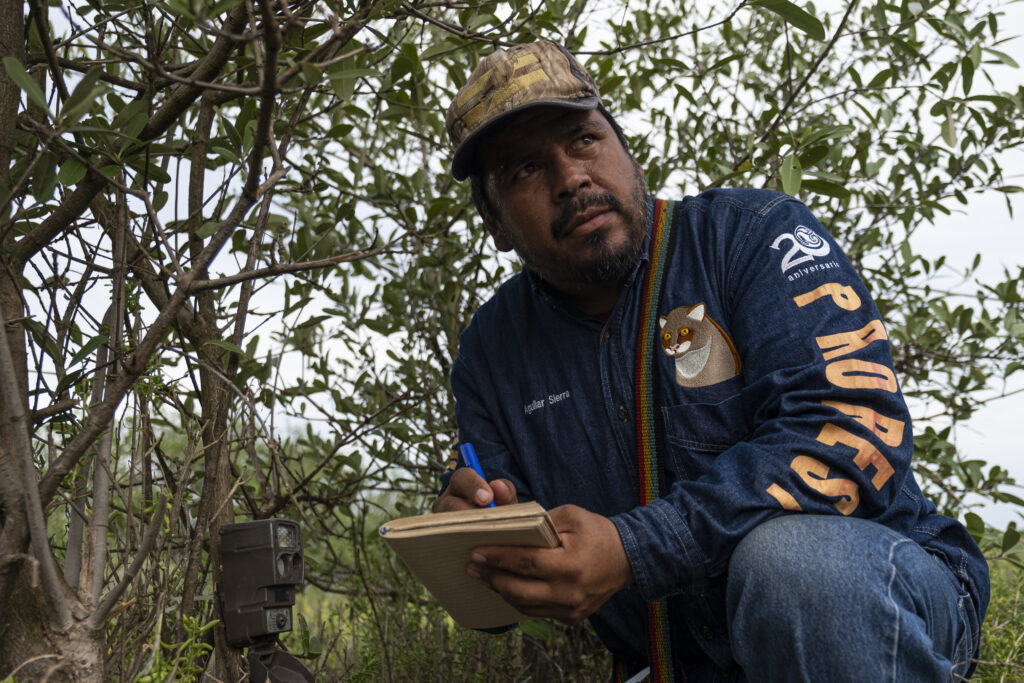
“This is natural restoration. More than 40 of us participated,” says González Díaz, standing barefoot in the muddy patch of greenery surrounded by dead mangrove trunks protruding from the lagoon surface. “It was a much taller forest than what is left.”
The Marismas Nacionales Nayarit Biosphere Reserve in the state of Nayarit is a vast area of interconnected mangrove forests, lagoons, wetlands, and intertidal zones. Covering more than 1,300 square kilometers (800 square miles), it is larger than more than a third of national parks in the United States and United Kingdom. The biosphere reserve provides habitat for wildlife, including jaguars and more than 250 bird species, and the mangroves are vital for the fishing that drives community economies.

“It is a reservoir of life,” says González Díaz. “A key role of the mangroves is as an incubator for shrimp. Everything is protected in the roots,” he says back on the shore, where some fishermen are taking advantage of downtime during the seasonal shrimp fishing ban to repair their nets.

In tropical and subtropical countries around the world, mangrove ecosystems provide community livelihoods, function as biodiversity hotspots, and help mitigate the effects of climate change. An understanding of their importance has been growing over the decades, but research and conservation efforts were often disconnected or localized. Five years ago, a few organizations banded together to try to change that.
The Global Mangrove Alliance was launched in 2018 by coordinating members Conservation International, The Nature Conservancy, Wetlands International, the International Union for the Conservation of Nature, and the World Wildlife Fund with the goal of reversing mangrove loss and increasing mangrove habitat. An estimated 50 percent of the world’s mangroves have been lost in as many years, with devastating impacts on food sovereignty and climate change resilience, but the rate of loss has been slowing down substantially.
Membership in the alliance quickly began to grow, and it comprises more than 25 national and international non-governmental organizations, foundations, and scientific research institutions on five continents.
“We were just seeing a lot of mangrove efforts fail,” says Emily Landis, Climate and Ocean lead at The Nature Conservancy. “It seemed that no one was learning from each other. We were duplicating efforts. We weren’t achieving scale. It was just a general sense of, we can do better, and we should be doing better, in talking to each other and working on this together.”
The organizations started out taking stock of the situation, with dialogue to sort out who was doing what where, what was working, and what was not. Member groups were already working on initiatives in tandem with their own constellations of partners, from rural fishing cooperatives to NASA. The alliance began setting up working groups at the global level and now also national chapters on the ground to address different facets of their overarching goals of halting mangrove loss and implementing science-based restoration with community engagement.
“We’ve continued to grow as the challenges, and the solutions have been identified,” says Landis. “The main priorities that we have are a policy, a science, and a communication focus.”

There are roughly 70 species of mangrove trees and shrubs across tropical and subtropical regions of the world, growing in intertidal zones where saltwater and freshwater mix. Their raised root systems provide food and shelter for juvenile shrimp, shellfish, fish, and many other animals, acting as nurseries for species that contribute both to local livelihoods and to the global seafood supply. More than four million people from Indigenous and other local communities rely directly on mangroves for small-scale fishing activities.
Mangrove forests form natural buffers where the land meets the sea, mitigating storm surges, and winds, which reduces risks of flooding and other damages. They also have a tremendous capacity to convert carbon dioxide into organic carbon, stored both in the trees and shrubs and especially in the sediment-rich soil in which they grow. Scientific studies over the past five years have found that mangrove forests sequester up to five times as much carbon as inland tropical forests.
“Of all the world’s ecosystems, mangroves are the most effective per unit area at trapping and storing carbon,” the Global Mangrove Alliance noted in its first State of the World’s Mangroves report, launched last year. “In the face of accelerating climate change, mangroves are particularly important contributors to ecosystem-based adaptation,” the report highlighted.
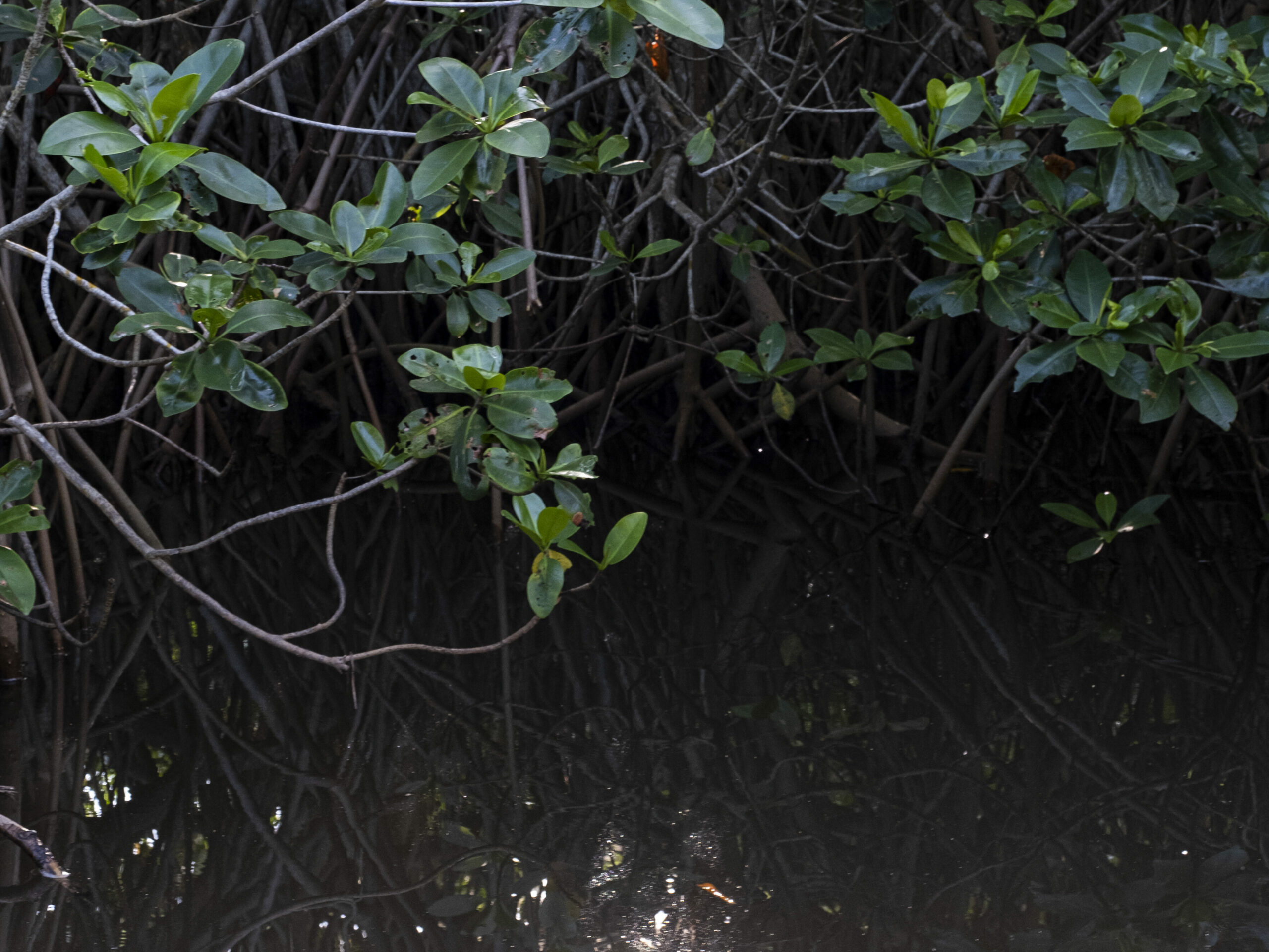
The converse is also true, though: per area, the destruction of mangroves can be a particularly important contributor to greenhouse gas emissions. The majority of that destruction is due to human activity, and research shows that aquaculture and agriculture—notably the pond-based shrimp farming and oil palm industries—are the top cause, according to studies. Deforestation and urbanization are also contributors. So is climate change. While mangroves naturally alleviate some climate change impacts, human activity can act as stressors, weakening the capacity of mangrove forests to handle tropical storms and rising sea levels.
There is growing recognition in the international community of the importance of mangroves and other coastal ecosystems, and how they are interconnected with communities, climate change, and food systems. In 2015, the United Nations Educational, Scientific and Cultural Organization, UNESCO, established July 26 as the International Day for the Conservation of the Mangrove Ecosystem. In 2019, the UN General Assembly proclaimed 2021-2030 the UN Decade on Ecological Restoration and marine and coastal ecosystems are part and parcel of the call to action.
Coastal ecosystem restoration, traditional livelihoods, and climate change were also part of the discussions at the first annual and in-person Ocean and Climate Dialogue, held this past June in Germany to discuss how to strengthen ocean-based action in the context of climate change and UN programs and mandates. The initiative grew out of the UN Climate Change Conference in 2019, and a UN secretariat will present a summary of the dialogue at the next conference, COP27, in November. The Global Mangrove Alliance team has been working closely with other coalitions on advocacy related to climate change negotiations.
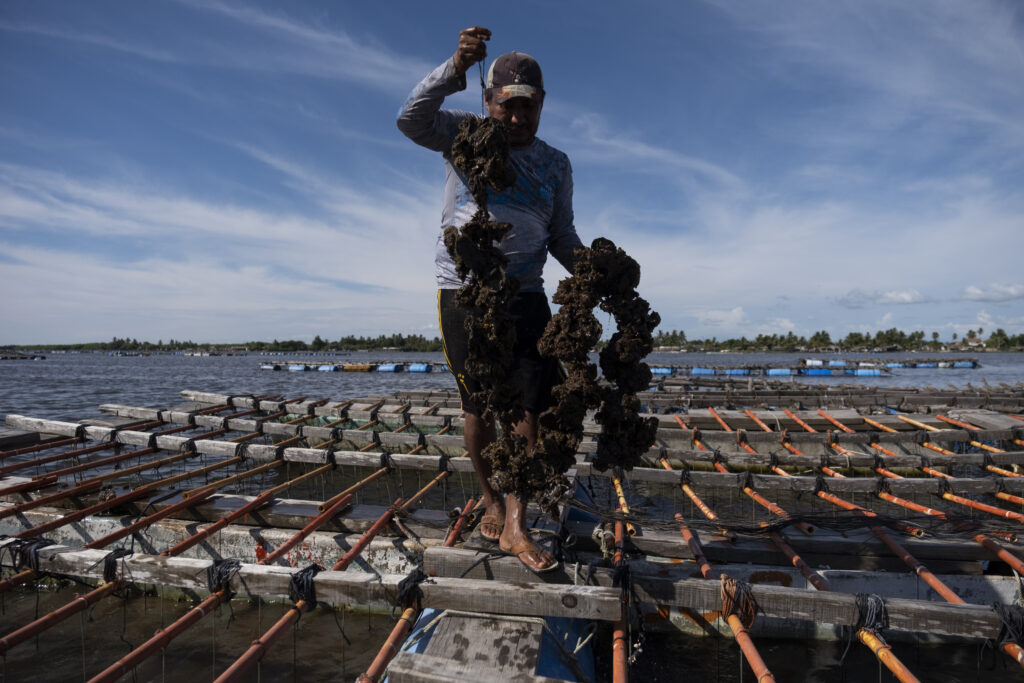
“We’re working on stronger language for oceans, which obviously then benefits mangroves and having mangroves be part of the climate solution both for mitigation and for adaptation. And this will of course, then also trickle down to the country level because all of these are country-level commitments, but as a whole, it’s a global solution,” says Landis.
“From the policy side, there’s a lot that can still be done,” she says. “There’s also a lot of interest right now in innovative financing around mangrove systems.”
The Global Mangrove Alliance is examining the issue of financing in partnership with a World Economic Forum mangrove working group. Carbon offsets have been around for decades but have largely focused on inland forest protection and replanting. Corporations, institutions, and even individuals can fund certified initiatives that reduce or prevent carbon dioxide emissions to offset their own carbon footprints. There is now growing interest in what has been dubbed Blue Carbon, with credits for the protection and restoration of seagrasses, tidal marshes, and mangroves.
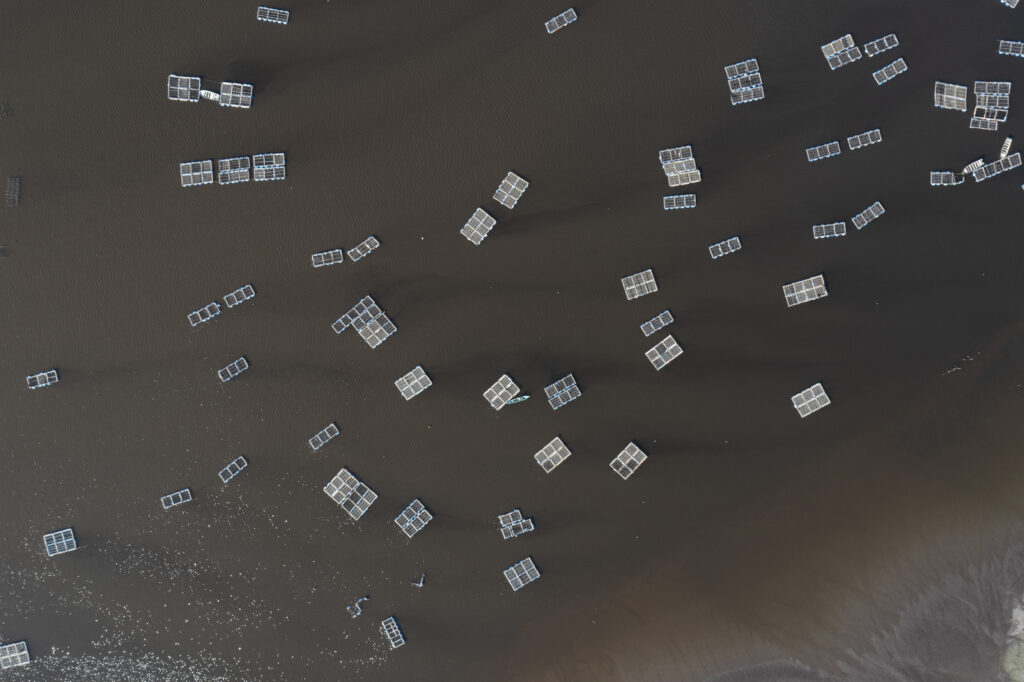
For Kevin Loza Pérez, the connection between mangroves and climate change is much more tangible. He is the treasurer of Ostricamichin, a community cooperative farming oysters in mangrove-lined waterways near the southern edge of the Marismas Nacionales Nayarit biosphere reserve in Mexico. The mangroves are key to livelihoods in the Boca de Camichin village, where practically everyone lives from fishing and oyster farming, and they also protect those livelihoods from hurricanes, which have been increasing in frequency and intensity with climate change.
Ostricamichin members use the hanging raft method, with empty half shells strung on ropes hanging from cross-beams on floating rafts. They anchor their rafts in one area while oyster larvae attach to the old shells and then move their rafts to another area while the new oysters grow. But when hurricanes and storms are approaching, as well as in the off-season after harvest, they anchor and affix their rafts in channels within the mangrove forest for shelter.
“Mangroves serve as protection,” says Loza Pérez, doing three things at once in a little Ostricamichin office along the coconut palm-lined shore, where the cooperative will sort and weigh the daily harvest around dusk. For now, oyster farmers are still heading out to tend to their raft systems throughout the day, slowing their boats to a crawl when they approach farming areas.
“We have done clean-up work in the mangroves and estuaries,” says Loza Pérez, adding that cooperative members have successfully established regulations and conservation policies in their general assemblies, with fines and other consequences to deter deforestation and littering.
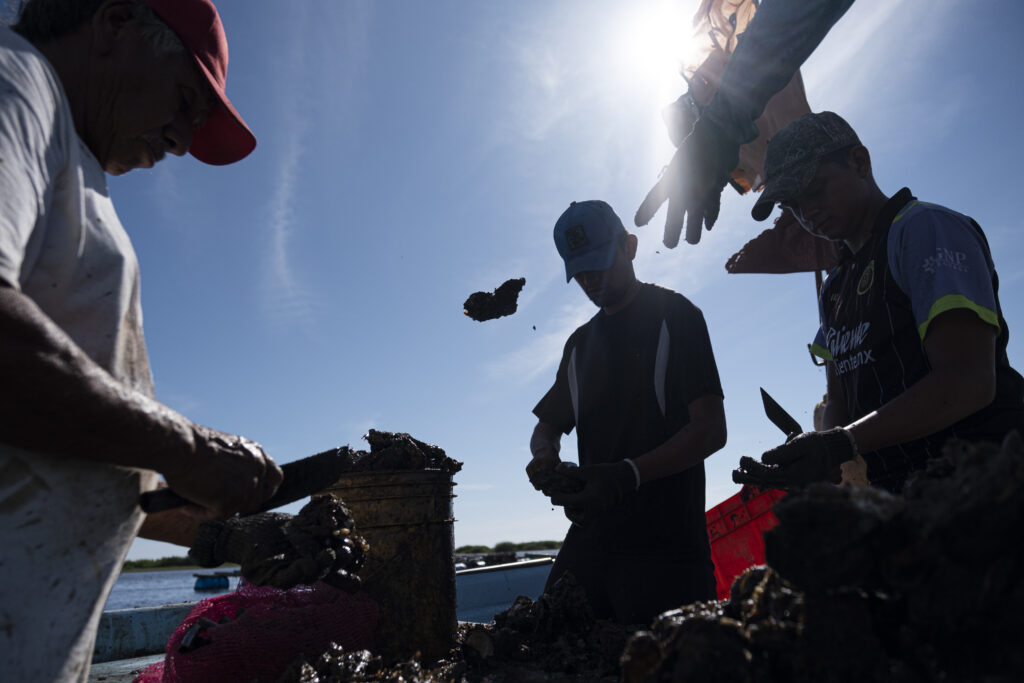
Now 23, Loza Pérez has taken part in oyster farming for a decade, starting out by helping his father. Ever since he was a young child, his grandfather would talk about his dream for the oyster farming community: industrial smoker ovens. As one of the cooperative board members, Loza Pérez has been able to help fulfill that dream. Ostricamichin recently bought two smoker ovens, which will greatly increase the value of part of the local annual harvest, which hit 1,400 metric tons last year. Loza Pérez now has a new dream the cooperative has been working at: certification for export.
Value-added production and sustainable fishing practices have been a priority for some Global Mangrove Alliance members working with local communities on the ground, while others have focused on scientific research, conservation, restoration, or policy. The alliance works closely with Global Mangrove Watch, an open-access online platform with remote-sensing data mapping that can help local governments and groups monitor mangrove habitat and loss. The idea has always been to also coordinate on the ground between members at the local level.
“When we started the alliance we had to come up with a global goal in terms of the restoration and keeping existing mangroves standing, but it took time with all of these partnerships,” says Karen Douthwaite, Lead Ocean Specialist at the World Wildlife Fund.
The Global Mangrove Alliance has been supporting regional program development with community groups, NGOs, governments, and businesses in tropical and subtropical regions around the world. Some alliance members have also been engaged in other regional efforts, such as the Save Our Mangroves Now project in the Western Indian Ocean region.
“That has really been aimed at international policy engagement but also bringing together four of the countries of the Western Indian Ocean—Kenya, Tanzania, Mozambique, and Madagascar—around a shared vision for mangrove conservation and looking at the importance of mangroves to people,” she says.
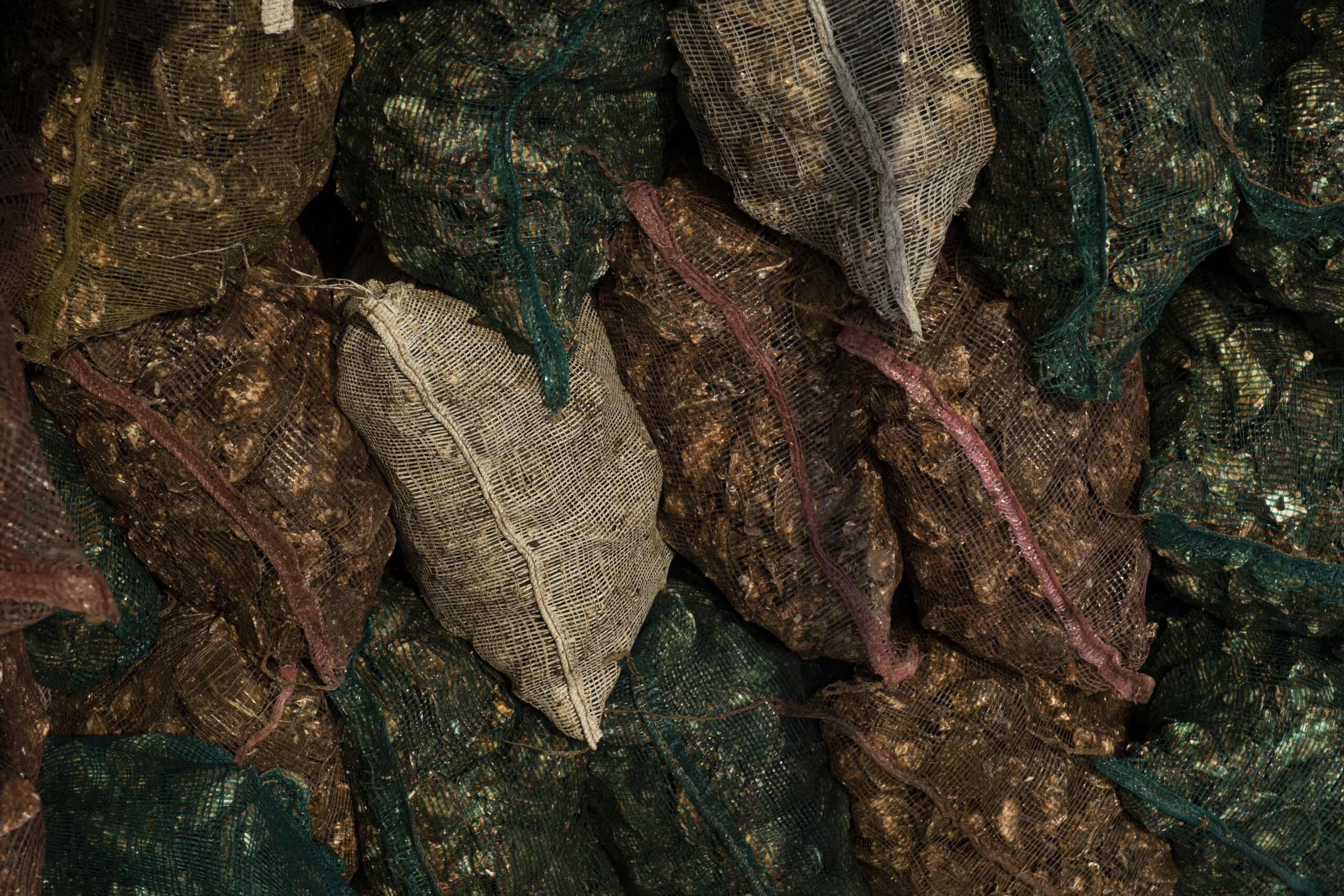
Now, Global Mangrove Alliance coordinating members are moving forward with the development of national chapters on the ground in countries with local interest in forming them. It is a third step in the alliance’s phased approach. Colombia was the first to get started around two years ago, and others have since followed suit. In the past year, there have been efforts to start national chapters in several countries, including Kenya, Indonesia, México, and Ecuador.
“We were able to build momentum and build out our membership and then secure additional resources. We finally had an opportunity where we felt like we could start to expand work on the ground,” says Douthwaite.
World Wildlife Fund and The Nature Conservancy staff in Mexico began discussions about the potential national chapter at the end of last year. Along with other groups, both organizations have been working for years in the area of the Marismas Nacionales Nayarit biosphere reserve. Their incipient chapter efforts are focused on that area.
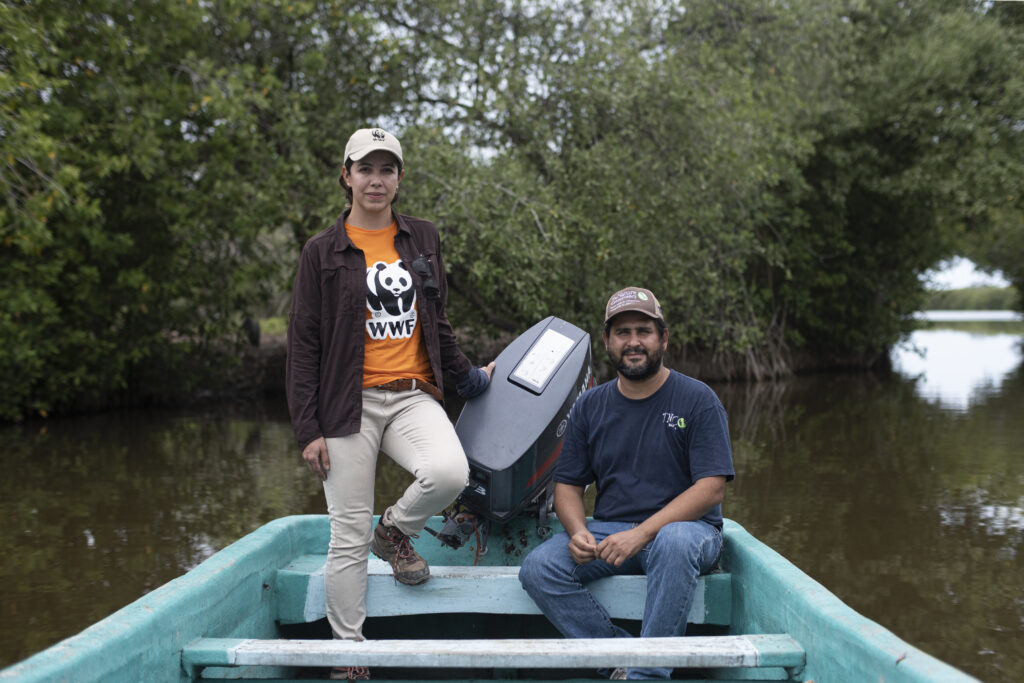
The biosphere reserve was established in 2010. It overlaps pre-existing ejido community rights and fishing cooperative permits, and its creation required approval from local ejido community residents all around the area. Several years of local engagement and negotiations with government authorities preceded the decree declaring the area a protected area, eventually fomenting community support for the reserve.
“They got involved in this model from its creation to its management, but not in the beginning,” says Víctor Hugo Vázquez Morán, director of the Marismas Nacionales Nayarit biosphere reserve, which is managed by the National Commission of Protected Natural Areas. “Generally in Mexico people think a protected natural area is not to be touched. If they see the US models they say no, as soon as an area is created here we won’t even be able to enter.”
Mexico has moved away from an expropriatory model, and the biosphere reserve designation provides even more leeway for community and economic activities. Community land and resource rights are respected, and their livelihoods are also protected from competition, as fishing and business rights in the area are restricted to locals.
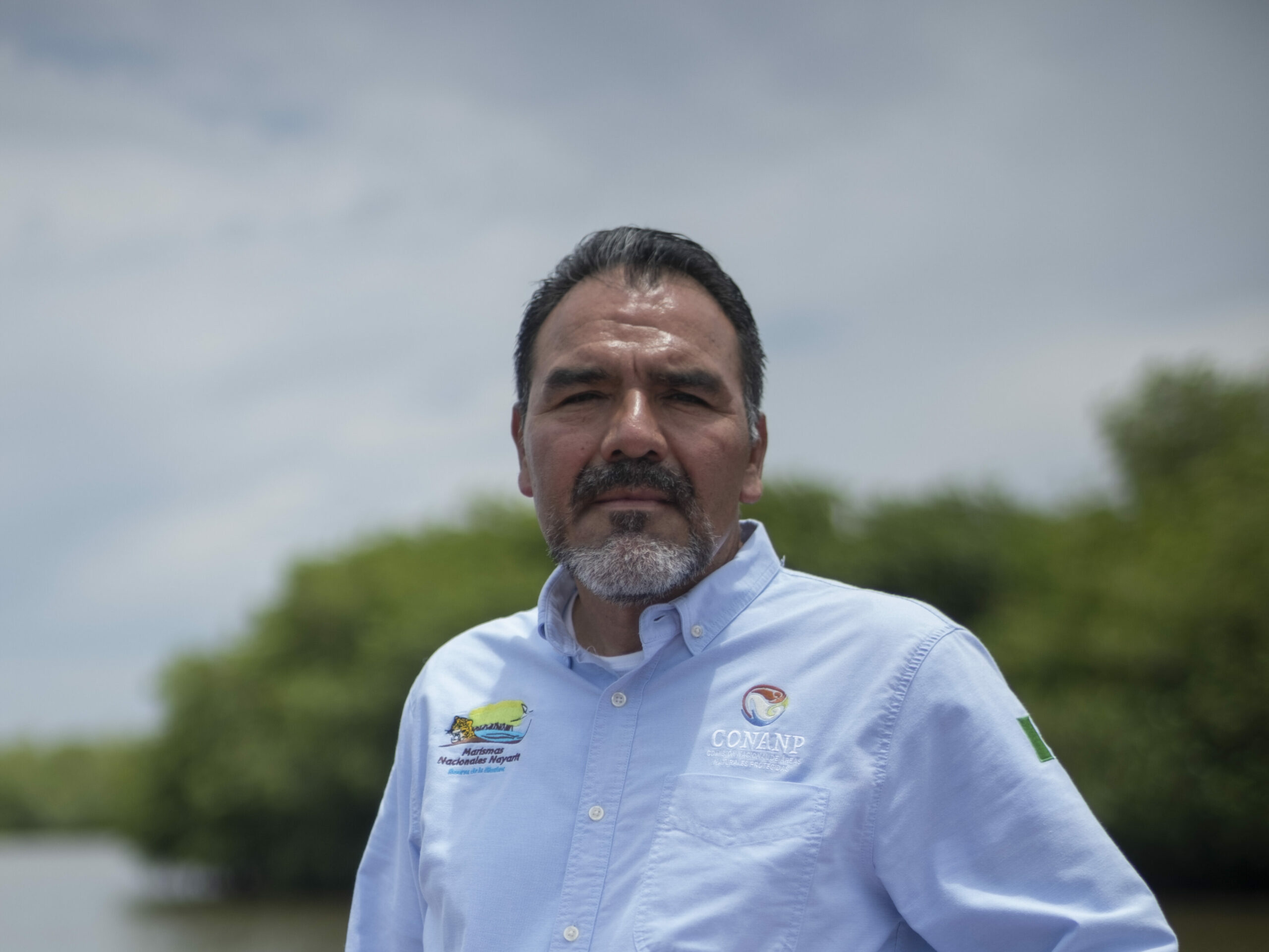
The Marismas biosphere reserve, however, demonstrates how protecting mangrove forests themselves is not enough for conservation. Human activities and natural phenomena at sea and far inland can have drastic impacts on the balance of sediment and salinity levels required for mangrove habitat. Projects and infrastructure established prior to the creation of the Marismas biosphere reserve are still affecting the mangroves today.
Fifty years ago, the government excavated a channel between the Pacific ocean and Marismas waterways with the aim of boosting shrimp in the lagoons. Over the decades, the man-made Cuautla channel that was initially only the width of a road has eroded to more than 1.5 kilometers (about one mile) across and has generated coastal erosion displacing a nearby community. The additional influx of saltwater disrupted the balance of salinity, particularly in the Chumbeño lagoon, the furthest inland. That is what caused the mass die-off of mangroves in the lagoon, where community monitor González Díaz and other residents have engaged in some restoration efforts.
Highways and roads through wetlands areas disrupted freshwater flow and natural capacity to control flooding. Dams on most of the 12 rivers feeding into the Marismas, as well as increased water use by agriculture and populations, have restricted the incoming flow of freshwater and the dams have also decreased the levels of needed sediments, mangroves, and estuaries in some areas of the Marismas. In other areas, more intense inland storms in the watershed of a major undammed river are resulting in too much sediment.
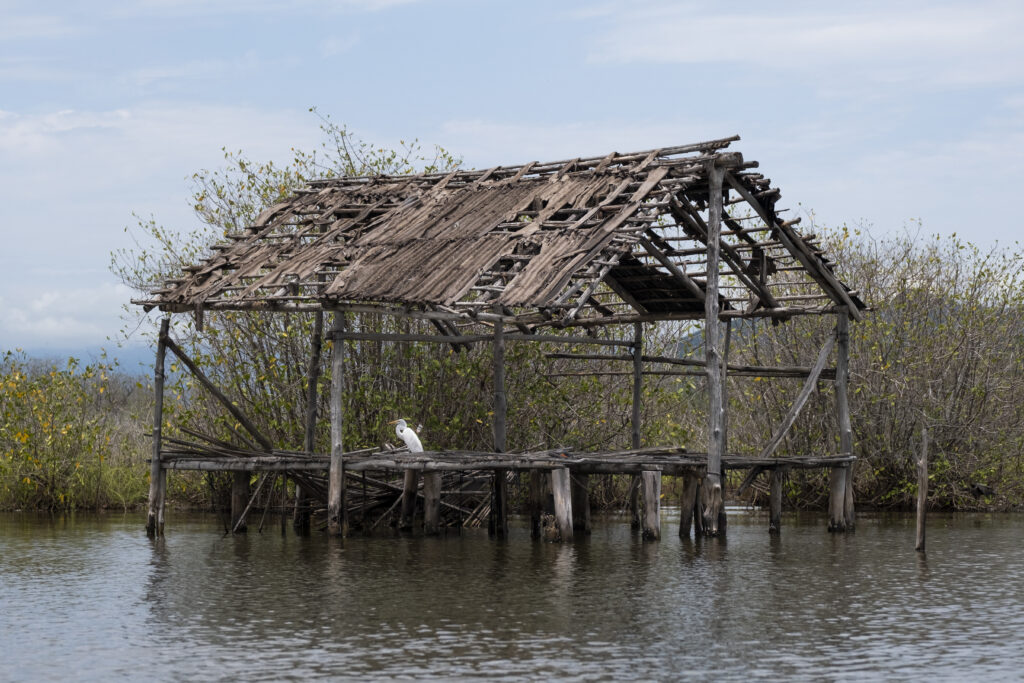
Long-term comprehensive land and water management plans inland are needed, but overall the biosphere reserve is a conservation success story. In its first five years of existence mangrove coverage actually increased by three square kilometers (1.8 square miles) and since then only 0.32 square kilometers has been lost—to illegal pond-based shrimp farms, according to Vázquez Morán, who has been working in the area with the National Commission of Protected Natural Areas since before the Marismas reserve’s creation. The National Commission of Protected Natural Areas has a network of community monitor teams working in the biosphere reserve and inland areas of influence. and It also provides some small grants to support community projects.
“We increased the mangrove surface coverage, something no other part of the country or protected natural area has been able to show,” he says. “What better indicator than that could there be to demonstrate that the joint work with communities, ejidos, and other agencies from all three levels of government, with a lot of participation, is achieving the objective of the creation of the protected area: the conservation of these mangrove forests while they continue to sustain work and the economy.”
To support its work and economy, a philanthropic gift from corporate donors went to a cold storage room for the Ignlogar fishing cooperative in the Antonio R Laureles community, near the northern edge of the Marismas biosphere reserve. Without it, when locals brought in their shrimp or fish hauls, they had no choice but to sell to the intermediaries waiting on the shore at whatever price the buyers were offering.
In coordination with The Nature Conservancy, SmartFish, a Mexican NGO, undertook a Fishery Improvement Project for whiteleg shrimp with the Ignlogar cooperative. Fishery Improvement Projects are usually environmentally-focused collaborative processes between various stakeholders to improve sustainability in fishing and business practices. The fisheries can work toward applying for international Marine Stewardship Council certification.
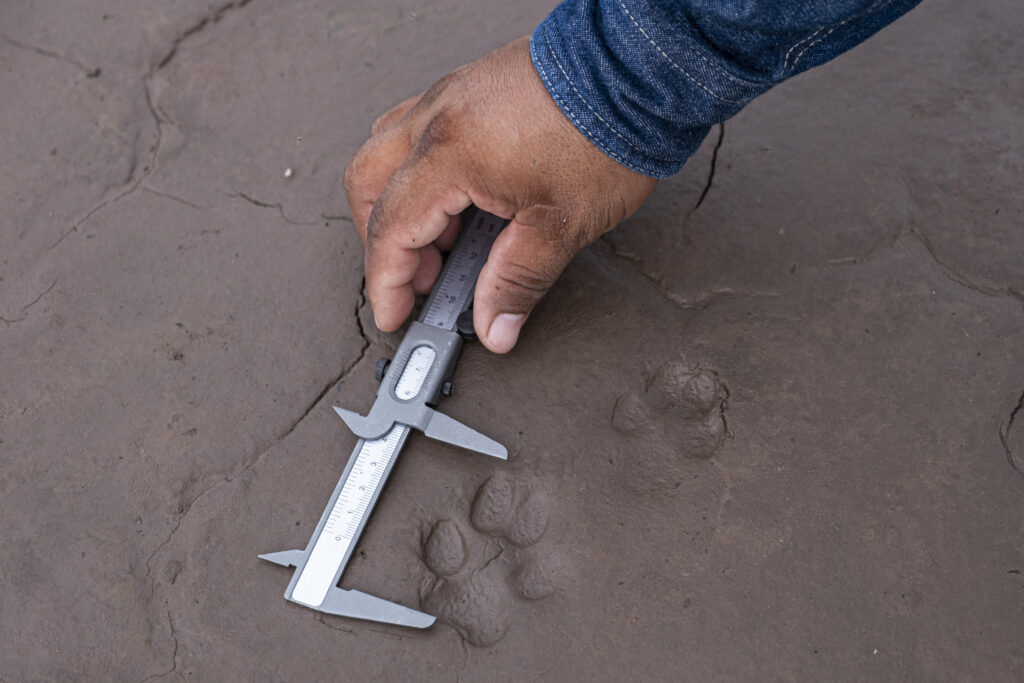
SmartFish supports small-scale fishers that adopt sustainable practices to access better-paying markets by improving quality, implementing traceability, and addressing logistics and infrastructure barriers. With Ignlogar, SmartFish worked a fair bit on the management, administrative, and business side of things, but has also gotten the cold storage facility up and running, training local women in cold chain management, equipment maintenance, processing, and packaging traceable, value-added products. SmartFish has a marketing-focused offshoot branch that helps find markets for sustainable, small-scale fishing products.
“We work with cooperatives to give them tools that give them access to a preferential market, as long as they meet a series of criteria. They need to be organized cooperatives, possess use permits, and have a commitment to the environment,” says Alejandro Rodríguez Sánchez, one of the founding members of SmartFish, following a visit to the Ignlogar cooperative.
“We have an office that takes care of promoting demand for these sustainable products, because once that’s there, people on the supply side can close the cycle with purchasers,” he says. “We are trying to get the big chains to create responsible purchasing policies.”
Other cooperatives in the Marismas area have heard of Ignlogar’s experience with SmartFish and the Fishery Improvement Project and have expressed interest in projects of their own. The Nature Conservancy and World Wildlife Fund staff in Mexico have been analyzing where that might be possible. That has been the initial focus of the nascent Global Mangrove Alliance chapter in Mexico: pooling knowledge, experience and resources to figure out how best to collaborate to fill gaps and address local needs.

Back in the cold storage room outside the Ignlogar cooperative office, Dainen Jaramillo Barrera and Viridiana López Rodríguez are explaining what the procedures will be once the seasonal shrimp fishing ban lifts. They and 12 other women will be back to work in full swing, getting literal tons of shrimp on ice while they sort it by size and weigh it. They also work with line-caught white snook, preparing, packaging, and freezing high quality fillets that can fetch much higher prices than selling it fresh in the village.
Twenty years old, Jaramillo Barrera used to go out fishing with her husband before she got the job, and she loves seeing the stars while out on the water at night. She never affiliated as a cooperative member herself, as is the case for most women and youth who participate in fishing activities in the region. Ignlogar currently has 220 members, and only three are women. But that is starting to change, and the cooperative board members seem proud that it is. Of some 80 pending membership applications, most are young, and roughly half are women, according to the cooperative president.
It is only for part of the year, but working in the cold storage facility is López Rodríguez’ first formal job. A 28-year-old single mother of three, she never had the opportunity before, getting by with income from a little snack shop she set up out of her home. “We have learned so many things,” says López Rodríguez. She, Jaramillo Barrera, and many of the other women were very nervous when they first started, but now they could run the place—and they essentially do, with support from SmartFish when needed.
“Once we had started this work, we sent out [our product] and people said it turned out really well,” says Jaramillo Barrera. “People liked it, and that gave us motivation and joy to keep working.”
